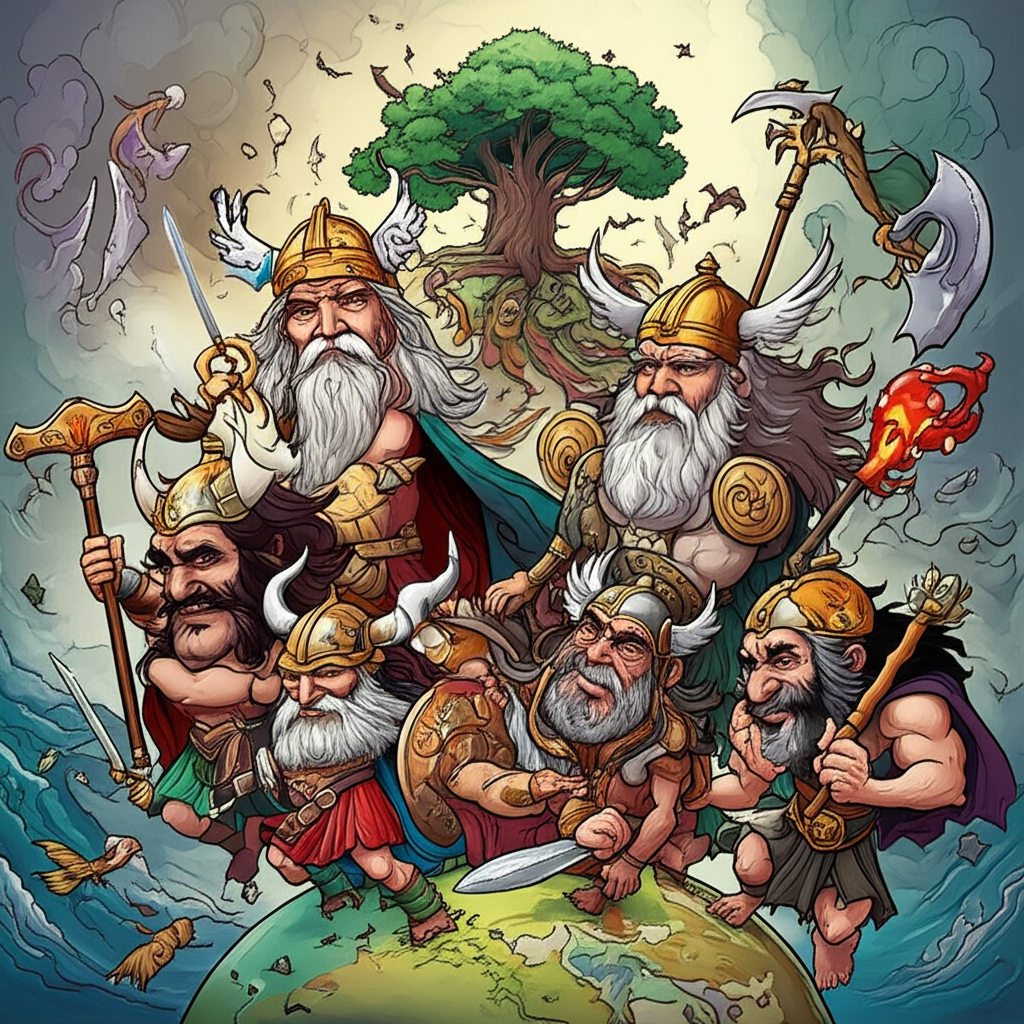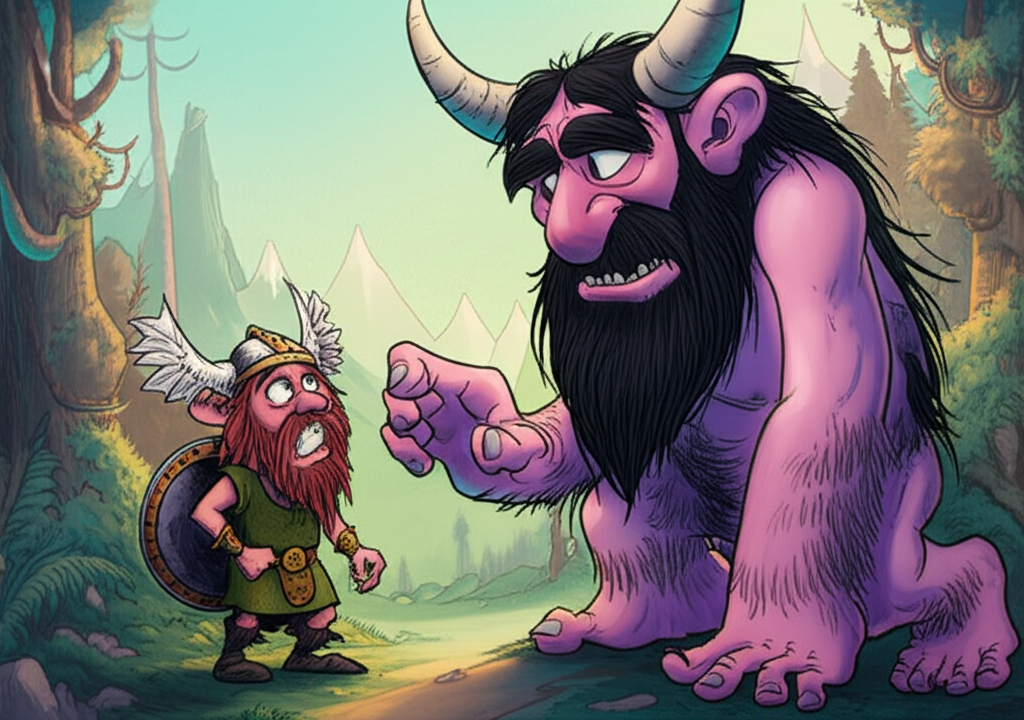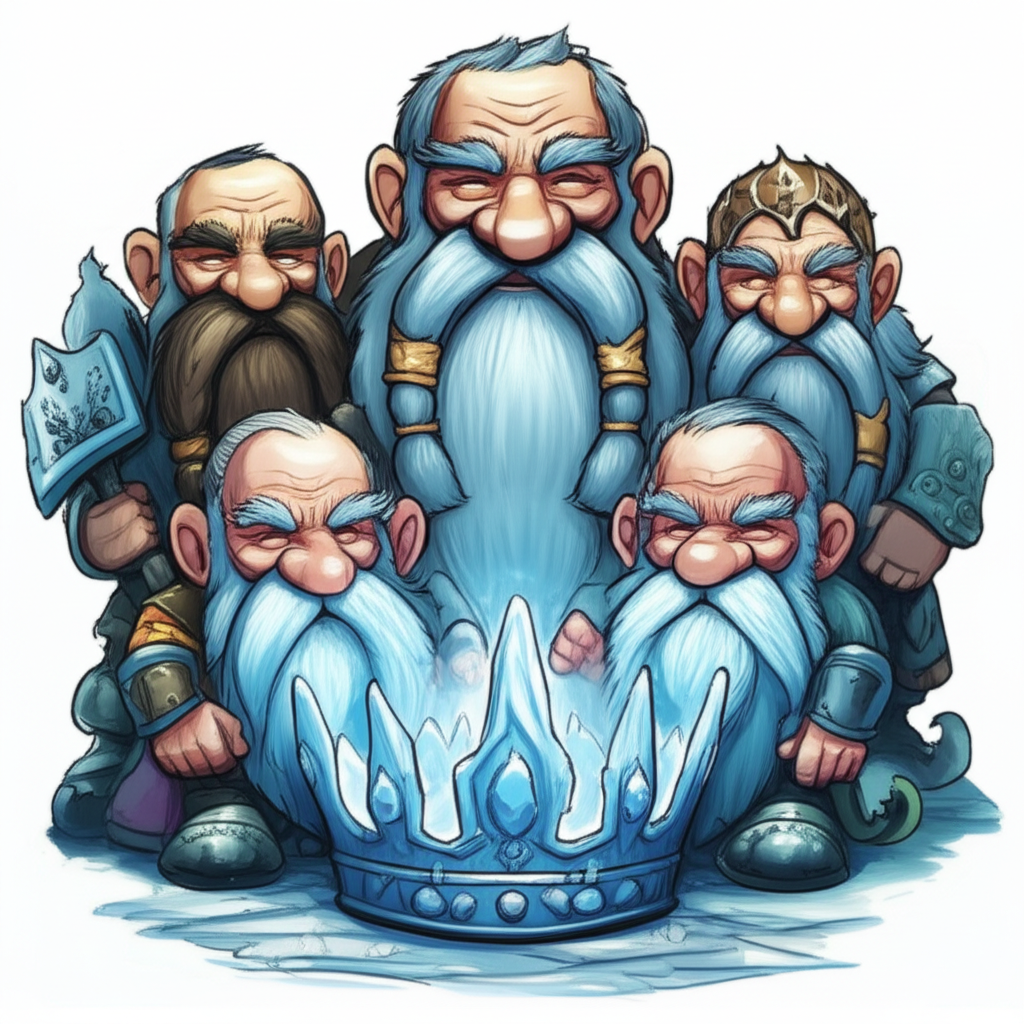
In the hushed whispers of ancient Scandinavia, a rich tapestry of myths and legends was woven, passed down through generations by the Norse peoples. These were not simply tales to entertain, but profound narratives that sought to explain the unexplainable, to grapple with the forces of nature, and to understand the very fabric of existence as they perceived it. Among these foundational stories is the dramatic saga of the Aesir-Vanir War, a conflict that, according to these ancient traditions, laid the groundwork for the creation of Midgard, the realm of humanity. It is crucial to understand that these are traditional stories, the imaginative expressions of past cultures, and are not presented as factual accounts or divine truths.
The cultural milieu from which these myths emerged was one of harsh beauty and constant challenge. The Norse people lived in a land of dramatic fjords, towering mountains, and unforgiving winters. Their existence was deeply intertwined with the natural world, where the fury of storms, the bounty of the harvest, and the unpredictable cycles of life and death held immense sway. Their worldview was characterized by a belief in a complex pantheon of divine beings, each embodying different aspects of existence – from the raw power of thunder to the subtle wisdom of foresight. They saw the world as a dynamic place, shaped by the actions of gods, giants, and other mythical entities, and their stories often reflected this understanding of cosmic forces at play. The Aesir-Vanir War, in this context, can be seen as a symbolic representation of the inherent tensions and eventual integration of different, yet essential, forces within their perceived universe.
At the heart of this conflict lie two distinct groups of deities: the Aesir and the Vanir. The Aesir were often depicted as the more warlike, proud, and authoritative gods, associated with power, justice, and the heavens. Odin, the Allfather, with his single eye symbolizing immense wisdom and sacrifice, and Thor, the thunderous warrior wielding his mighty hammer Mjolnir, are prime examples. The Aesir represented the more structured, perhaps even rigid, aspects of divine order. Their symbolism often revolved around strength, governance, and the protection of Asgard, their celestial stronghold.
In contrast, the Vanir were associated with fertility, prosperity, magic, and the earth. Freya, the goddess of love, beauty, and seidr (a form of Norse magic), and her twin brother Freyr, the god of peace, fertility, and sunshine, embody the essence of the Vanir. They were seen as more attuned to the cycles of nature, the abundance of the land, and the more subtle, generative powers. Their symbolism often invoked images of lush fields, abundant harvests, and the nurturing forces of life.
The origins of the Aesir-Vanir War, as recounted in these ancient traditions, are shrouded in a dispute that likely stemmed from fundamental differences in their domains and perhaps a clash of values. The narrative suggests a deep-seated animosity, a perceived arrogance on the part of the Aesir towards the Vanir, and a resulting act of aggression. One prominent account speaks of the Aesir’s disdain for the Vanir’s practices, which were perceived as unorthodox or even threatening. This led to an open conflict, a titanic struggle between these divine factions.
The war was not a swift or decisive victory for either side. It was a protracted and brutal affair, marked by immense power and devastating consequences. The gods of both realms unleashed their might, their battles echoing across the cosmos. Imagine the clash of thunderous blows from Thor’s hammer against the potent magical energies wielded by the Vanir. Imagine the fury of Odin’s strategic brilliance pitted against the earth-shattering power of Vanir deities. The very foundations of the realms were shaken by this divine animosity.
However, the immense cost of this perpetual conflict began to weigh heavily on both the Aesir and the Vanir. It became clear that their ongoing strife was not only destructive but ultimately futile. A realization dawned that their respective strengths, though different, were also complementary. The Aesir’s order and strength, coupled with the Vanir’s fertility and magic, could potentially create a more balanced and prosperous existence.
This mutual understanding paved the way for a truce and, eventually, a resolution that was as profound as the war itself. As a symbol of peace and reconciliation, a significant exchange of hostages took place. Prominent figures from both pantheons were sent to live among the other. The Aesir sent their respected figures, including the wise Mimir and his brother Hoenir, to dwell with the Vanir. In return, the Vanir sent their most esteemed members, Njord, the god of the sea, and his children, Freyr and Freya, to reside in Asgard. This exchange was not merely symbolic; it represented a fusion, an intermingling of divine powers and perspectives. It was through this integration, this sharing of wisdom and influence, that the stage was set for the creation of Midgard.
The merging of Aesir and Vanir influence, their combined energies and visions, is said to have been instrumental in shaping Midgard. The stories suggest that after the war and the subsequent peace treaty, the gods, now more unified, turned their attention to the nascent realms. The creation of Midgard, the world where humans would eventually dwell, is often depicted as a collaborative effort, drawing upon the strengths of both divine families. The structured order and protective might of the Aesir, combined with the fertile, life-giving energies of the Vanir, contributed to the formation of a world capable of sustaining life and growth.
In the context of their worldview, this war and its resolution may have symbolized several important concepts for the ancient Norse. The conflict could represent the primal forces of nature – the storm versus the growth, the harshness of winter versus the bounty of summer. The eventual peace and integration might have signified the necessity of balance in the universe, the understanding that different forces, even those that seem opposed, are crucial for a complete and functioning whole. The exchange of hostages could be interpreted as a lesson in diplomacy, in understanding and integrating different perspectives to achieve a greater good. Furthermore, the creation of Midgard as a result of this divine union could represent the inherent potential for creation and order that arises from overcoming conflict.
In contemporary times, the myth of the Aesir-Vanir War and its connection to Midgard continues to resonate. It finds expression in various forms of modern media, from epic fantasy novels and video games that draw heavily on Norse mythology, to academic studies in comparative religion and folklore. These interpretations often explore themes of divine conflict, the nature of power, and the creation of worlds, breathing new life into these ancient narratives for a modern audience. Scholars analyze the symbolism, the cultural context, and the enduring appeal of these stories, understanding them as windows into the minds and beliefs of our ancestors.
It is important to reiterate that the saga of the Aesir-Vanir War is a creation of ancient imagination, a traditional story told by the Norse peoples to understand their world. As Muslims, we recognize that the sole Creator and Sustainer of all existence is Allah (SWT). These ancient narratives, while rich in cultural heritage and imaginative power, do not alter this fundamental truth.
Ultimately, the story of the Aesir-Vanir War and its purported role in the origins of Midgard serves as a testament to the enduring power of storytelling. It reflects a deep human desire to comprehend the mysteries of existence, to imbue the world with meaning, and to explore the complex interplay of forces that shape our reality. These ancient myths, preserved through generations, offer us a glimpse into the cultural heritage and the boundless imagination of people long past, reminding us of the richness and diversity of human expression across time.





